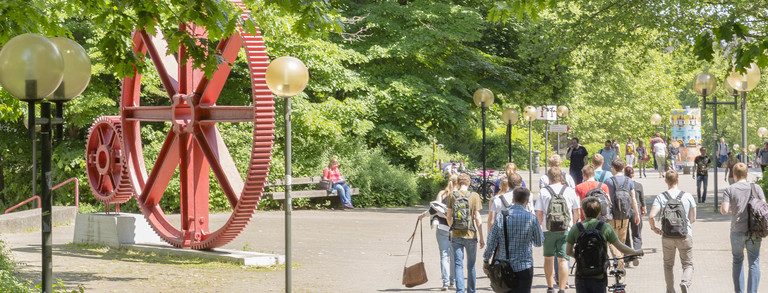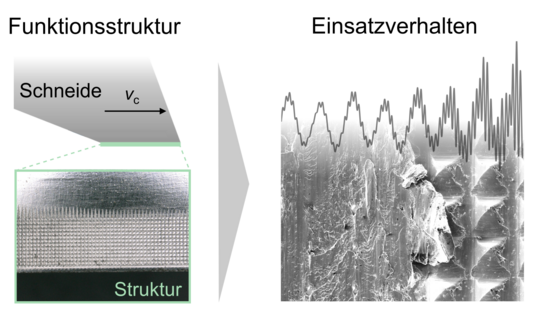Fundamental investigation of process-stabilizing damping effects in milling through the use of functionally structured peripheral cutting edges
Dynamic effects often limit the productivity of machining processes. A targeted increase in the stiffness or structural damping of the manufacturing system, for example, represents a major design challenge and requires design-specific solutions. The design and optimization of machining processes to increase productivity, for example, by exploiting stable speed ranges, requires detailed knowledge of process-specific dynamic properties of the production system and extensive expert knowledge in the field of process dynamics. In contrast to the two approaches mentioned, a disturbance of the regenerative effect is largely independent of the framework conditions imposed by the production system and process, which is why this method is particularly interesting in terms of a universally applicable strategy for increasing productivity.
Against this background, the process-stabilizing potential of a targeted functional surface modification of milling tools is evaluated within the scope of this project. This approach envisages a damping of regenerative chatter vibrations through the use of functionally structured peripheral cutting edges. These structures, which are applied to the free surface, are intended to counteract dynamic deflections on contact with the material and bring about targeted damping of the process, caused by dissipative processes, for example as a result of increased friction. The design of functionally structured tools for the targeted damping of milling processes is the central objective of this cooperative project between the Institute of Machining Technology of the Department of Mechanical Engineering and the Virtual Machining group of the Department of Computer Science. For this purpose, suitable experimental and simulative test environments are to be developed that allow fundamental research into the interrelationships between structural design and process dynamics and subsequently enable targeted structural transfer to milling tools.







